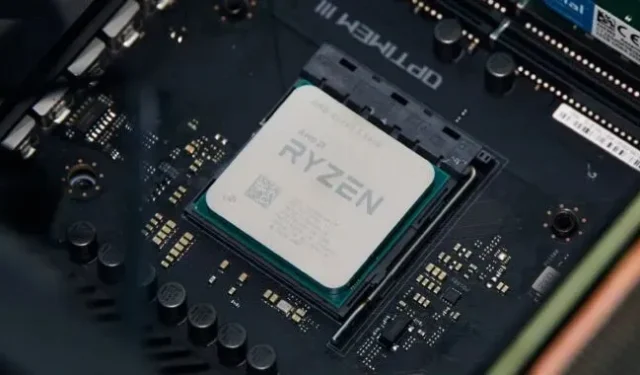Review: Ryzen 5 5500 and 5600 could breathe new life into old AMD PCs

Nearly a year and a half after the launch of the first Ryzen 5000 processors, the Zen 3 CPU architecture is finally coming to cheaper chips.
The AMD Ryzen 5 5500 and 5600 processors (available today for $159 and $199 respectively) are six-core, 12-thread processors designed directly for low-end mid-range PCs used for gaming and photo and video editing. The new Ryzen processors have significantly reduced the Ryzen 5 5600X’s original asking price of $299 (for months, the 5600X was the cheapest way to get a Zen 3). And the processors finally provide a replacement for the latest generation Ryzen 5 3600 for $199.
But the new chips have stiff competition in the form of an Intel Core i5-12400 processor ($210 with an integrated GPU, $180 without it). Intel desktop processors have been saddled with the outdated Skylake architecture and/or legacy 14nm manufacturing process for years, but the modern architecture and Intel 7 process make the 12400 the most compelling mid-range Intel processor option in a long time. The Ryzen 5 5600X also recently faced price cuts, dropping to around $230 in order to make room for the $300 eight-core Ryzen 7 5700X.
Let’s take a look at how the Ryzen 5500 and 5600 chips perform and whether they are suitable for building a new PC (or upgrading an old one).
Performance: no surprises from Zen 3
Zen 3 is a known quantity at this point, and it’s no surprise where the 5500 and 5600 end up in most of our tests. In both single-threaded and multi-threaded performance, the Ryzen 5500 and 5600 processors represent a solid step up from the Zen 2-based Ryzen 3000 and 4000 chips, as well as any other six-core Intel Skylake processors. The Intel chips featured here are the Core i5-10400, but many 8th and 9th generation Core processors also fall into this category.
The Ryzen 5 5500 makes a particularly strong case for itself, offering 90 to 95 percent of the performance of the Ryzen 5 5600 for about 80 percent of the money in most of our tests. This makes sense since the 5500’s 4.2GHz peak clock speed is about 95 percent higher than the 5600’s 4.4GHz clock speed. The only exception was our Handbrake video encoding test, where the Ryzen 5600 was about 13 percent faster. The 5500’s reduced L3 cache (as well as its reduced clock speed) can slow it down a bit.
The Ryzen 5600 also looks a bit mediocre next to the Core i5-12400. The 12400 outperforms the Ryzen in everything but the Handbrake encoding test, and typically costs $20 less if you buy the non-graphics version. The multi-threaded performance of the Ryzen 5 5600 isn’t much different from that of the Core i5-12400, but Intel manages to pull away by 12% in Geekbench and 17% in the more intensive Cinebench test. This makes the i5-12400 a more attractive option, especially if you’re playing games at 1080p and high frame rates. (Lower resolutions at higher frame rates tend to be CPU bound, while 1440p and 4K resolutions tend to be more GPU bound.)
We haven’t been able to test how the 5500 and 5600 stack with AMD’s existing six-core Zen 3 chips, the Ryzen 5 5600G and Ryzen 5 5600X. Tests of the 5600X on other sites (and similar specs) suggest the 5600 is so close to the performance of the 5600X that you can safely ignore the 5600X most of the time and save $30 in the process. But the 5600G still has a useful niche as it is the only one of these chips with an integrated GPU. This feature makes it a worthy choice for a low-end non-GPU gaming PC (whether you’re going to add a dedicated GPU at all, or waiting for prices to come down to more reasonable levels).
Energy efficiency: Intel plays catch up
Our handbrake coding test is quite useful for doing some quick power and energy efficiency math calculations. This is because this is a timing test and the power consumption is basically constant throughout the encoding task.
AMD’s power efficiency compares well to older 10th and 11th generation Intel chips. Ryzen computers draw slightly more power from the wall, but they also take less time to shut down. But the Core i5-12400 managed to catch up with the Intel 7 process. AMD could very well regain its power efficiency advantage with Ryzen 7000 processors on TSMC’s 5nm process, but for now, Intel has a slight edge (at least when you’re not using the processor). Core i7 or i9 with power limits enabled).
Leave a Reply